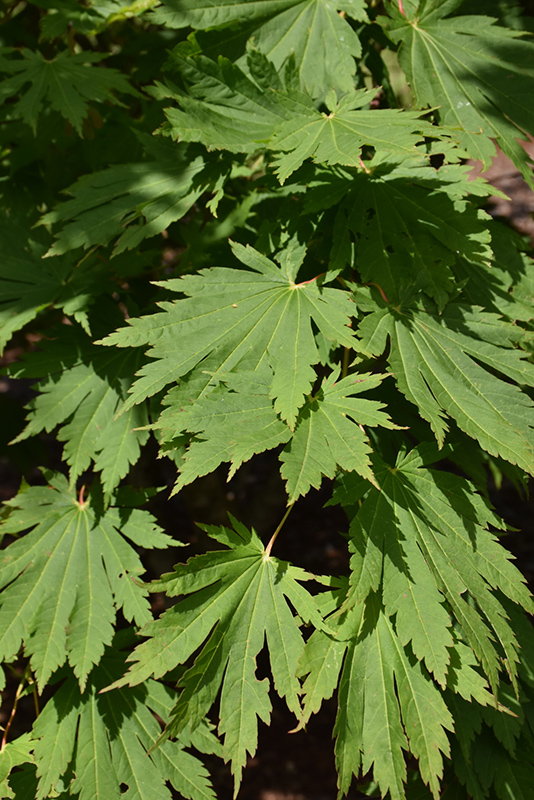Ed Wood Fullmoon Maple*
Acer japonicum 'Ed Wood #2'
* This is a "special order" plant - contact store for details
Height: 20 feet
Spread: 25 feet
Sunlight:
![]()
Hardiness Zone: 6
Brand: J. Frank Schmidt & Son Co.
Description:
A vigorous cultivar featuring a shapely growth habit with curving branches, and very large, fan shaped, cutleaf foliage that turns an amazing crimson color in fall; gives a refined, tropical feel to the home landscape
Ornamental Features
Ed Wood Fullmoon Maple is primarily valued in the landscape for its ornamental upright and spreading habit of growth. It has attractive green deciduous foliage. The large deeply cut lobed palmate leaves are highly ornamental and turn outstanding shades of yellow, orange and crimson in the fall.
Landscape Attributes
Ed Wood Fullmoon Maple is an open multi-stemmed deciduous tree with an upright spreading habit of growth. Its relatively fine texture sets it apart from other landscape plants with less refined foliage.
This tree will require occasional maintenance and upkeep, and should only be pruned in summer after the leaves have fully developed, as it may 'bleed' sap if pruned in late winter or early spring. It has no significant negative characteristics.
Ed Wood Fullmoon Maple is recommended for the following landscape applications;
- Accent
- Mass Planting
- General Garden Use
Planting & Growing
Ed Wood Fullmoon Maple will grow to be about 20 feet tall at maturity, with a spread of 25 feet. It has a low canopy with a typical clearance of 3 feet from the ground, and is suitable for planting under power lines. It grows at a slow rate, and under ideal conditions can be expected to live to a ripe old age of 100 years or more; think of this as a heritage tree for future generations!
This tree should only be grown in full sunlight, although you may want to keep it away from hot, dry locations that receive direct afternoon sun or which get reflected sunlight, such as against the south side of a white wall. It prefers to grow in average to moist conditions, and shouldn't be allowed to dry out. It is not particular as to soil type or pH. It is quite intolerant of urban pollution, therefore inner city or urban streetside plantings are best avoided, and will benefit from being planted in a relatively sheltered location. Consider applying a thick mulch around the root zone in winter to protect it in exposed locations or colder microclimates. This is a selected variety of a species not originally from North America.
* This is a "special order" plant - contact store for details








